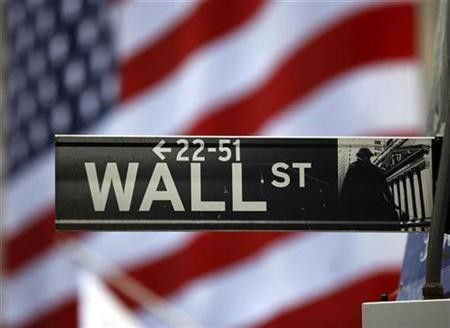US Stocks On Cusp Of Correction, Or Bear Market, As Fed Closes Its Monetary Open Bar

After five years of stock market gains that put gleeful investors in beach houses, worrying and fretting are emerging as the top growth sectors on Wall Street. Analysts watch the Federal Reserve slowly turn off the tap of cheap credit that has propelled equities, and many of them sense that a sustained drop in share prices is nearly inevitable.
“Our overarching view … is that dwindling fuel from the Fed will hamper further progress [in the stock market],” Melanie Debono of London-based Capital Economics said this week.
Since May 2009, the S&P 500, the most widely followed index of shares in America’s 500 largest companies, has more than doubled. Last year alone the S&P 500 shot up a breathtaking 30 percent. The S&P 500 and the Dow Jones Industrial Average, which tracks share prices of the nation’s top 30 industrial corporations, have set numerous records in the first three months of this year.
Equity markets are ready for a correction -- if not a retreat -- because stock market returns haven't been driven by either corporate earnings or the nation’s economy.
The main engine of the stock market’s remarkable growth has been Federal Reserve money printing. In response to the financial crisis that ended in mid-2009, the Fed has been buying an unprecedented amount of U.S. government bonds and mortgage-backed securities. At its height, the Fed was buying $85 billion of these securities each month. Since the price of bonds moves in the opposite direction of the interest rate that bonds pay, such massive buying has boosted bond prices and sliced bond interest rates. In other words, the Fed made it very inexpensive for corporations to borrow money … money that the Fed hoped corporations would use to make capital investments and hire workers.
What actually happened, though, is that it’s had only a marginal effect on corporate behavior. Instead the Fed’s actions had two main effects. First, the bond buying has driven investors out of the bond market (where interest rates are at ultra-low levels) and into the stock market where returns are better. As more and more investors piled into equity markets, the increased demand hiked share prices.
Secondly, because the Fed credits commercial banks’ accounts by exactly the amount of bonds they are buying, the nation’s money supply grows -- in effect, money printing. Over the past five years the Fed has injected an extra $2 trillion into the U.S. economy, money that has gone primarily into Wall Street, not Main Street.
Now that money printing is ending. By the end of last month, the Fed had cut its bond purchases to $45 billion, with a projected halt to all such purchases by October. Meanwhile, the Fed is expected to raise its near-zero interest rates next year.
“The historical evidence also suggests that the stock market will struggle to make strong gains after the Fed begins to raise rates,” Debono said. “There have been seven major tightening cycles in the U.S. since 1970 and the average increase in the S&P 500 in the six months after the Fed’s first rate hike was only about 5 percent.”
Shares also soared during the last five years because there haven’t been many obvious alternatives for retail investors and mutual fund companies. Gold and other precious metals have been languishing, and non-U.S. investments have not been appealing.
Europe’s economy has been in the doldrums: while the U.S. stock market last year popped 30 percent, British stocks rose by about a third of that. The low interest rate environment engineered by the Fed has hammered emerging markets that depend on a higher-interest rate environment to attract investors. China’s growth has continued to falter. In short, outside of Wall Street, retail investors haven’t had attractive options.
And now it appears the one remaining attractive option is being withdrawn.
Early this month, PiperJaffray analyst Craig Johnson forecast a mid-year correction of the S&P 500 to a range of 1,650--1,600, which would amount to a decline of 13 percent to 15 percent. After Thursday's big losses, he reissued his warning: "The combination of a clear rotation toward defensive stocks and sectors, easing 10-year bond yields and narrowing market breadth should NOT [sic] be ignored. Should the historical midterm seasonality pattern continue to hold, we suspect this stealth correction will cut deep and the popular averages will not be spared."
A much-discussed metric known as the Shiller price-earnings ratio also signals a downturn, said Nicholas Colas, chief market strategist at ConvergEx Group, a global brokerage company based in New York. That metric tracks the historic relationship of a corporation’s long-term earnings power to its current share price.
“It shows that U.S. equity valuations are pushing towards crash-worthy levels,” Colas said in a note. “The writing is on the wall and we must all read it. Future returns are likely going to be lower.”
© Copyright IBTimes 2024. All rights reserved.





















